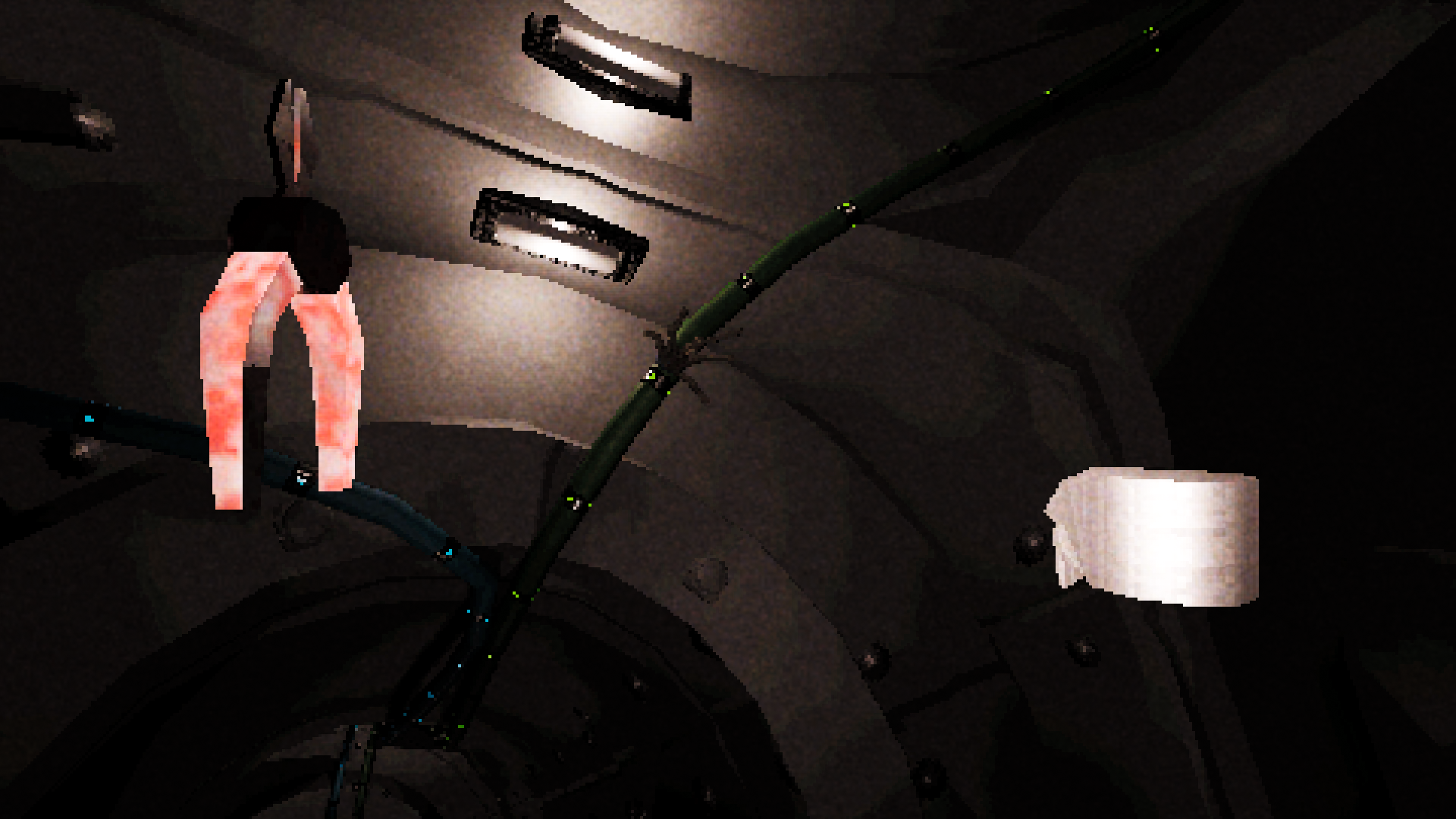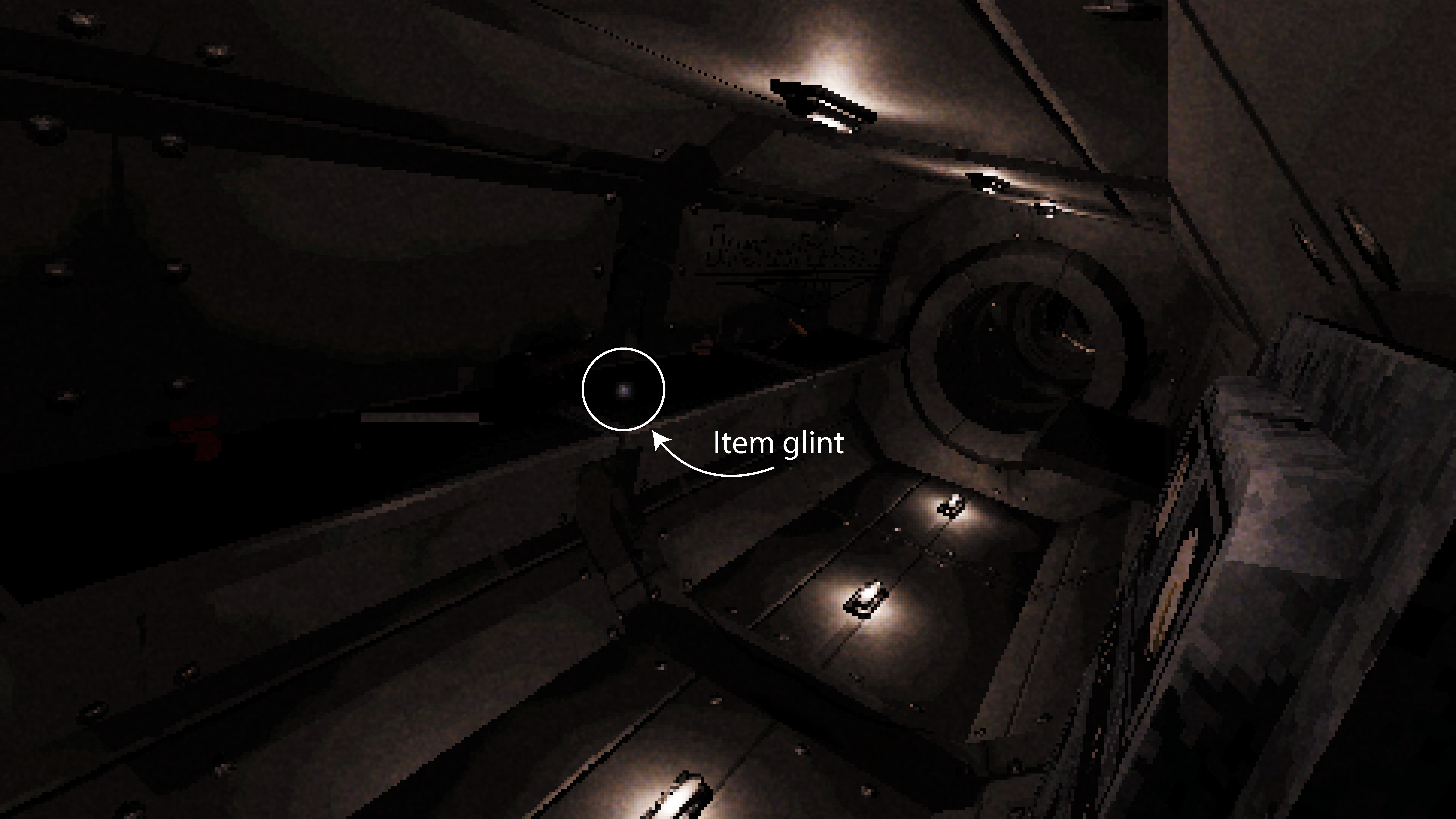Kessler Syndrome (2023)Systems Designer
I primarily worked as a systems designer, planning out movement and object interaction mechanics. However, I contributed to a number of other areas over the course of development, including creative and narrative direction, level design, VFX, and texturing. Because Kessler Syndrome is a horror game, the atmosphere and gameplay are closely interlinked, which necessitated a degree of interdisciplinary flexibility.
Platforms: PC, VR
Project Length: ~9 months
Role: Systems Designer
Software: Unreal Engine 5
Link: Steam

Kessler Syndrome has no gravity, necessitating an alternate movement system that grants the player the ability to navigate freely. A six-degrees-of-freedom (6DOF) system was what I eventually settled on. The player can move along three different axis relative to the camera with keyboard keys. The camera can be rotated with the mouse for pitch and yaw, and two additional keys for roll. This means that the player can traverse the environment in any orientation; a significant amount of tweaking was necessary to reduce the risk of inducing motion sickness, most notably reducing the roll speed.

In Kessler Syndrome, the player must complete a series of maintenance tasks using various objects scattered throughout the environment. Going back and forth to transport objects one at a time would quickly grow tedious, so I established the concept of a two-handed system very early on in the game's development. As a bonus, this decision creates parity between the VR and non-VR versions of the game, as it is standard for VR games to allow interaction with both hands.

Because the game is stylistically low-fidelity, small objects can blend in to the background, especially at longer distances. In addition, the function of certain objects might not be immediately recognizable to the player, potentially making it confusing which objects are needed to complete which tasks. The solution to both of these issues was adding a glint effect to task-relevant items when they are needed. The effect is bright from a distance and fades away up close, maximizing the visibility and visual clarity of the object.